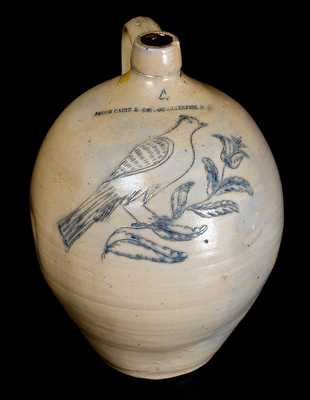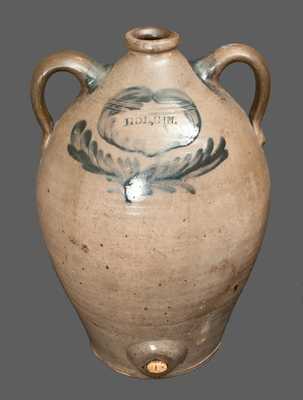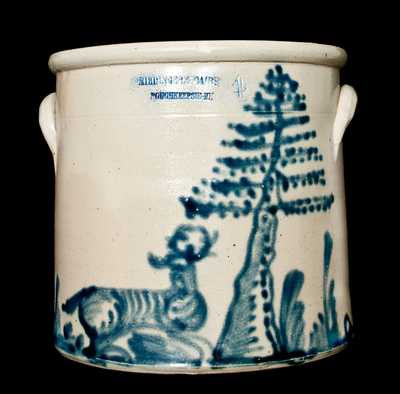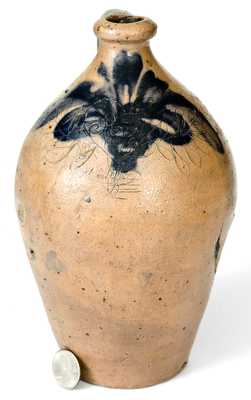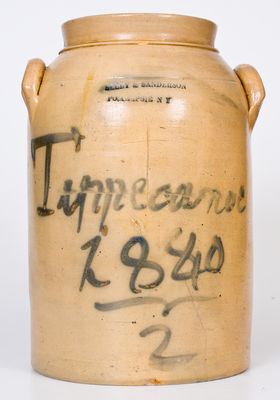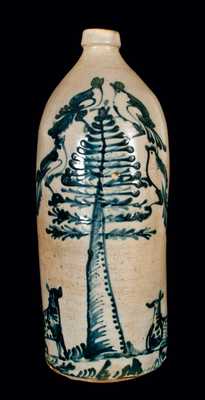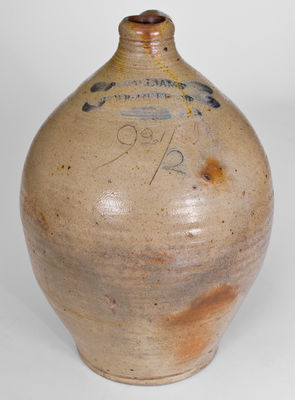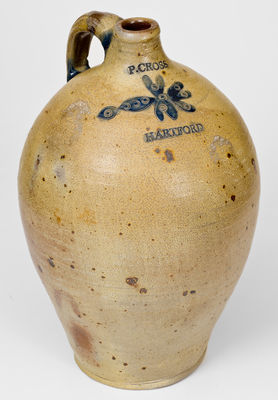Extremely Rare and Important Stoneware Jar with Cobalt Floral Decoration, Dated 1798, attributed to James Egbert and Durell Williams, Poughkeepsie, NY, 1798, ovoid jar with heavily-tooled shoulder, flared rim, and distinctive arched lug handles, decorated on one side with the slip-trailed date, "1798," and on the reverse with a slip-trailed floral motif. Appealing form with excellent color and bold slip-trailing. Relatively few examples of dated 18th century American stoneware are known. As Egbert and Williams were the earliest producers of stoneware in New York's Hudson River Valley, having founded their pottery in 1797, this jar survives as one of the earliest examples of stoneware known from the region. Literature: See Lukacs, "A Pot of Butter for the Victims," Ceramics in America 2005, for a jar of related form with incised bird and floral motifs, additionally incised "October 6, 1798 / Poughkeepsie," which was used to deliver butter to New York City during the yellow fever epidemic. Provenance: Harmer Rooke Galleries, New York, NY. Cracks in underside, continuing onto base area. One of these cracks additionally become a faint line below one handle and continues diagonally to the "1" in "1798." Base and rim chips. A faint 3" Y-shaped line descending from rim along one handle's juncture with the body of the jar. Opposite handle with a 1 3/4" chipped section and a small in-the-firing fissure. Bubbling to cobalt on floral design. H 11".






